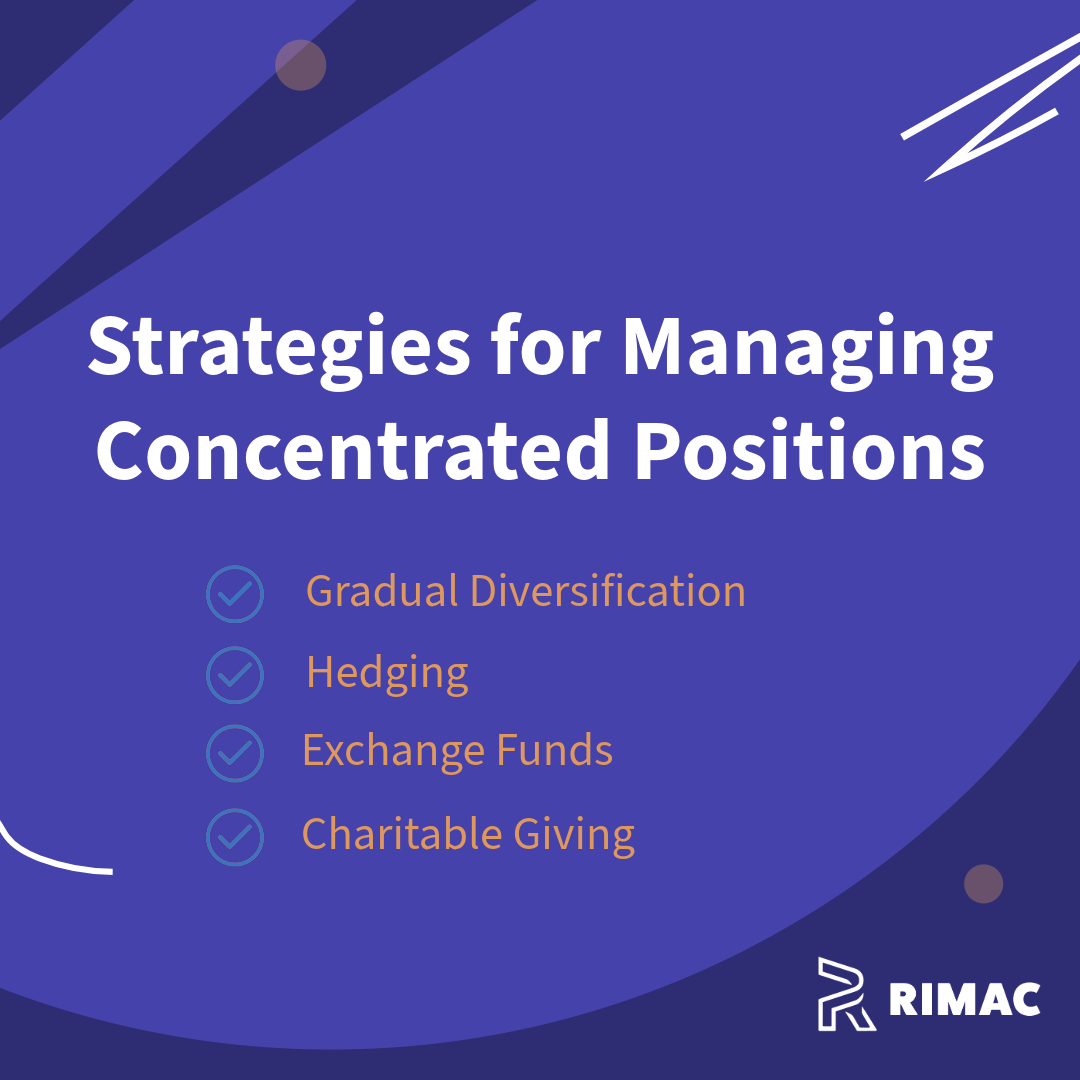The Hidden Risk in Your Portfolio: Managing a Concentrated Stock Position.
Key Takeaways
Concentrated stock positions often acquired through equity compensation, inheritance, or long-term investing can create significant wealth but also pose substantial financial risk.
Diversification is essential to reducing portfolio volatility and minimizing exposure to company-specific risks like market swings, regulatory shifts, or business underperformance.
Some strategies for managing concentration include gradual diversification, hedging strategies, exchange funds, and charitable giving.
It’s not unusual for successful investors, especially executives, entrepreneurs, and long-tenured employees, to find themselves with a substantial portion of their wealth tied to a single stock. Whether through company compensation plans, inheritance, or long-term investing in a favorite business, a concentrated equity position can both drive and derail wealth.
While a large holding in one stock may have been the engine behind considerable financial success, it also exposes your portfolio to unique and significant risks. If you've built significant wealth through a concentrated position, it's time to assess whether holding that stock remains a wise long-term decision.
What is a concentrated position?
A concentrated position exists when a significant percentage of your total investment portfolio is tied up in a single security, typically more than 10% to 20%. This can occur for several reasons:
Equity compensation: Founders, executives, and employees often accumulate stock through stock options, RSUs, or ESPPs.
Inheritance or gifts: A single stock may be passed down through generations.
Long-term conviction: Investors may have held a stock for decades, resulting in outsized growth relative to other holdings.
While these scenarios might feel like success stories, they also leave your portfolio vulnerable to risks that diversification typically helps reduce.
Why are concentrated positions are a double-edged sword?
Holding a concentrated position isn’t inherently bad. Some of the world’s wealthiest individuals made their fortunes by doing just that, think early Amazon, Nvidia, or Tesla investors. But what often goes unrecognized is the risk associated with what might seem like loyalty or confidence.
Concentrated stock holdings expose investors to elevated risks tied to a single company ranging from regulatory shifts and market volatility to industry-specific setbacks and internal performance challenges. In contrast, diversification helps cushion those risks by spreading investments across a broader mix of sectors and asset types.
The data reinforces this point: According to J.P. Morgan, 66% of the time a single-stock position underperformed a diversified investment in the Russell 3000 Index. In many instances, investors would have fared better simply holding cash rather than remaining overly exposed to one stock.
The Power of Diversification
Diversification is a foundational principle of long-term investing. It involves allocating capital across a range of asset classes, sectors, and geographic regions to avoid overexposure to any single investment. The goal isn’t just to maximize returns, it's to create a portfolio that can better withstand volatility and reduce the impact of poor performance in any one area.
By diversifying, investors smooth out their overall risk profile. When one holding lags, others may offset the decline helping maintain portfolio stability and supporting more consistent long-term growth.
Strategies for Managing Concentrated Positions
For those with a concentrated stock position, whether from equity compensation, inheritance, or long-term investing, it’s important to recognize that this success story could turn into a liability without proactive risk management. Fortunately, there are a variety of strategies available to help reduce exposure while aligning with your broader financial goals and tax situation.
Here are several key approaches to consider:
Gradual Diversification: Selling portions of a concentrated holding over time can help manage capital gains taxes and reduce emotional strain. A planned, incremental exit also allows investors to rebalance thoughtfully based on market conditions and income needs.
Hedging: Using options and other financial instruments can offer downside protection without requiring you to sell your shares. Strategies like protective puts, collars, or prepaid forward contracts allow you to limit losses while preserving upside potential though they can be complex and may require expert guidance.
Exchange Funds: For eligible investors, exchange funds provide a unique opportunity to swap a concentrated position for a diversified basket of stocks, all without triggering immediate capital gains taxes. These private investment vehicles can be powerful tools for achieving diversification while deferring taxes.
Charitable Giving: Donating appreciated stock to a qualified charity, donor-advised fund (DAF), or charitable remainder trust (CRT) can serve dual purposes: supporting a cause you care about while reducing tax liability and removing concentrated exposure from your portfolio.
Final Thoughts
There’s no one-size-fits-all approach to managing concentrated positions. Each strategy carries its own tax implications, liquidity considerations, and planning complexity. The right path depends on your unique circumstances, including your investment timeline, income needs, risk tolerance, and long-term goals.
At Rimac Capital, we offer a broad range of solutions to help you navigate and reduce the risks of a concentrated stock position. Our process starts with a thoughtful conversation to understand your specific circumstances and goals.
We work closely with clients to address complex financial planning needs and create tailored, tax-conscious investment strategies. Whether you're looking to diversify, preserve wealth, or unlock liquidity, we’re here to guide you with independent, personalized advice. Schedule a free strategy session with our team.
References:
J.P. Morgan. January 2023. Managing the Risks of a Concentrated Position. https://www.jpmorgan.com/content/dam/jpm/wealth-management/documents/managing-concentrated-positions-overview.pdf
This content is for informational purposes only and should not be considered financial or investment advice. Please consult with a qualified financial professional regarding your unique situation. Past performance does not guarantee future results. Investments involve risk, including the potential loss of principal. This is not a solicitation to buy or sell securities.
Connect with Us Today
Schedule a free 30-minute consultation call. We’ll learn more about your priorities and ensure we can answer all of your questions.


